Families

Baby and child health
In Families
Bookmark
Record learning outcomes
By offering good advice from birth onwards, pharmacy teams can play a vital role in helping parents deal with the many self-limiting ailments that occur during childhood. Here's our A-Z guide...
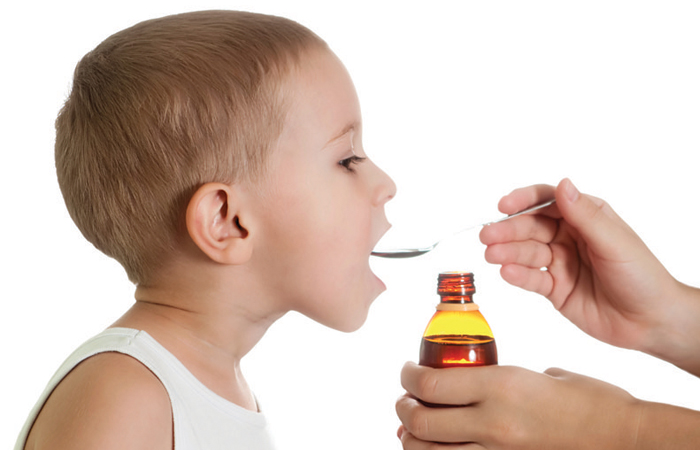
It is all part of growing up, but for some parents, any signs of illness in their child can be worrying – and their concern is not helped by the alarmist information that can be found on the internet. One of the most important things pharmacy teams can do is provide reassurance, says Dr Gurjinder Dahel of the Royal College of Paediatrics and Child Health.
“Parents naturally become very stressed when their child is showing signs of illness, but in most cases they will get better with very little or no treatment,” she says. “By knowing and outlining the red flags – dehydration, for example – pharmacists can put minds at rest, while ensuring that parents know what to look out for.”
As a paediatric doctor, Dr Dahel regularly sees children coming into A&E with simple issues such as infant thrush, chickenpox, colds and even a thorn in the foot. “In recent years, child health has become over-medicalised to the extent that parents book an appointment with a GP as a matter of course. Pharmacists have a real part to play in helping parents understand that these common illnesses are all part of being a child.
“While it is more challenging to identify an illness in a child who is too young to tell you what is wrong, kids are actually much more resilient than adults. So while you may encounter some big changes in them – such as irritability, quietness, or just wanting to lie still on the sofa – you’ll often find them bouncing back just as quickly.”
Here, we take an ‘A-to-Z’ look at some of the conditions you will encounter on a regular basis in the pharmacy.
Asthma
What is it? A common long-term respiratory condition in children.
Symptoms: Can be mild to severe and include shortness of breath, wheezing, coughing, phlegm, recurring bronchitis or shortness of breath while exercising. Usually worse at night.
Treatments: Typically, in children, symptomatic (‘reliever’) and preventative inhaler therapy.
Advise parents that understanding triggers and reducing exposure to them is the key to good asthma care. People should not smoke around children and homes should be kept dust-free.
Recommend 999: If any asthma symptoms become severe, parents should call for an ambulance.
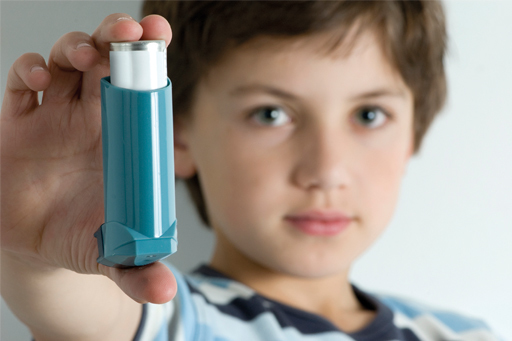
Atopic eczema/dermatitis
What is it? The commonest form of eczema. It can be long-term, but children often grow out of it.
Symptoms: Itchy, red, dry and cracked skin. Typically found on the backs/fronts of knees, inside/outside of elbows, around the neck, hands, cheeks or scalp.
Treatments: Emollients for daily use on dry skin – including bath soap substitutes that are free of sodium lauryl sulphate; topical corticosteroids during flare-ups. Advise parents to try and encourage their child not to scratch and help them avoid triggers.
Recommend a GP if you notice very red and weepy eczema with small blisters, as this could signal an infection. Similarly, if the skin is cracked or the problem is persistent or worsening.
Chickenpox
What is it? Also known as varicella zoster virus, chickenpox is often seen in children under eight years of age.
Symptoms: An itchy rash (mainly on the chest and back) comprising spots that resemble blisters. Discomfort is notably worse if the skin is too warm. Tends to last between 7-21 days.
Treatments: Paracetamol in the case of fever and cooler baths. Calamine lotion is the traditional option for topical use but is drying in nature. Newer cooling gels/sprays are available to reduce itching and limit any potential scarring.
Advise parents to keep their child away from others – especially pregnant women or immunosuppressed individuals. Ibuprofen is no longer advocated as it can make the lesions worse.
Recommend a GP if the child appears to be very unwell.
Colic
What is it? Prolonged bouts of crying in an otherwise healthy baby. Colic tends to begin from two weeks and lasts until around four months of age.
Symptoms: Crying, drawing knees up, clenching fists or arching the back. The baby’s face is typically red and flushed, and crying often occurs in the evening.
Treatments: Colic is essentially harmless, albeit very stressful for all concerned. Some products can be offered to aid digestion.
Advise parents on the dietary measures they can try (e.g. breastfeeding mothers cutting down on caffeine or spicy food, or omitting cows’ milk in case of any protein allergy).
Recommend a GP if a one-week trial of an OTC treatment has little effect, or the crying is accompanied by diarrhoea, constipation, vomiting, a fever or any other symptom of illness.
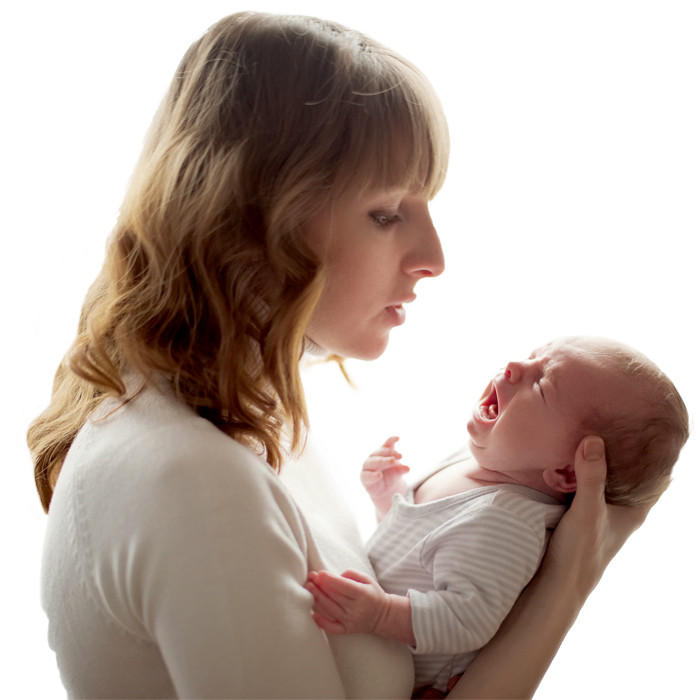
Cradle cap
What is it? A type of seborrhoeic dermatitis that can appear in babies.
Symptoms: Yellow, greasy scales that appear in the first three months following birth.
Treatments: Baby wash and oils to soften the skin scales; use of a natural oil (e.g. vegetable oil) for softening.
Advise parents not to pick at any flakes of skin as this can lead to infection.
Croup
What is it? A common virus that causes the larynx and trachea to swell.
Symptoms: A distinctive, barking cough (often likened to that of a seal or sea lion), sore throat, runny nose, temperature and a loud, high-pitched rasping sound when breathing.
Treatments: A single dose of an oral corticosteroid (dexa-methasone or prednisolone) can be prescribed to help reduce the swelling in the throat. Crying can exacerbate symptoms, so reassurance is key.
Recommend a GP if a child is having difficulty breathing and symptoms are not alleviated by steam.
Call 999 if any cyanosis (blueish discolouration of the skin) occurs.
Fever
What is it? The body’s natural response to infection.
Symptoms: Body temperature above 37.50C; looking tired or pale, suffering a headache or becoming irritable.
Treatments: Liquid paracetamol or ibuprofen formulations.
Advise parents to keep fluid levels up and monitor for dehydration. Rooms should be well ventilated and clothing lighter to reduce heat. Night-time checks (every four hours) are recommended. With viral infections, it can take up to five days for a child’s immune system to fight off the infection.
Recommend a GP or emergency contact if a baby under six months old is showing a temperature of 37.50C or higher, as they cope less well with infections. Also, any child with the following symptoms as per NICE guidelines: a non-blanching rash, neck stiffness, difficulty breathing and convulsions.
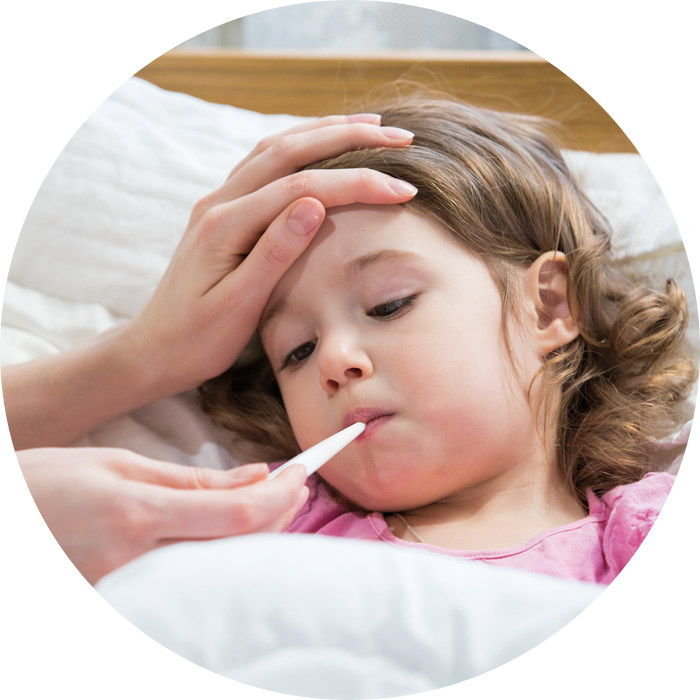
Gastroenteritis
What is it? Sickness and diarrhoea caused by a virus.
Symptoms: Feeling or being sick followed by diarrhoea; inability to keep food and drink down; mild fever.
Treatments: Rehydration solution sachets to restore water and salt levels. Plenty of fluids.
Advise parents to watch for any signs of dehydration (stronger or less frequent urination, a dry mouth or drowsiness). Mothers should continue breastfeeding and adopt a policy of little and often in terms of fluids in older children (e.g. every 10 minutes).
Recommend a GP if symptoms persist for more than 24 hours in older children or more than six hours with a baby. Newborn or very ill babies should see a nurse or GP without delay.
Glue ear
What is it? Otitis media with effusion, or glue ear, is caused by a build-up of fluid in the Eustachian tube.
Symptoms: Discharge from the ear and hearing loss.
Treatments: There is no OTC treatment for glue ear but the condition usually clears up by itself within three months.
Advise parents that glue ear can be treated with medical intervention but a ‘watch and wait’ approach is recommended.
Recommend a GP if symptoms persist beyond three months or there is concern about a child’s development due to the condition.
Head lice
What is it? Tiny grey-brown, wingless insects that live in the hair and suck blood – particularly common in schoolchildren.
Symptoms: Eggs (nits) are laid in the hair, resembling small white specks. They can make the scalp very itchy.
Treatments: Insecticidal or non-insecticidal lotions or sprays; use of a fine-toothed comb.
Advise parents that some head lice treatments are not suitable for children under two years of age.
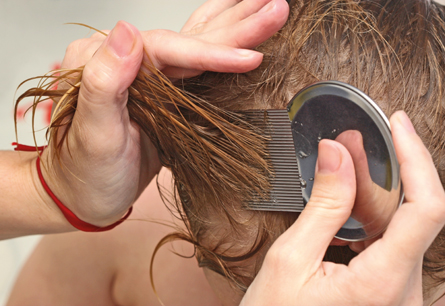
Middle ear infections
What is it? Blockage of the Eustachian tube, common with hayfever or colds.
Symptoms: Ear pain, difficulty hearing or loss of balance. Babies may also pull or rub at their ear, become irritable, restless or inattentive, lose their appetite, develop a cough or runny nose and experience diarrhoea.
Treatments: Liquid paracetamol or ibuprofen for pain relief.
Advise parents that most middle ear infections will clear up within 72 hours without specific treatment.
Recommend a GP if a child is very unwell or the symptoms continue or return.
Nappy rash
What is it? Irritation caused by a baby’s close contact with urine and faeces while wearing nappies.
Symptoms: Red spots or blotches that can become sore, uncomfortable and infected in the worst cases
Treatments: Can be managed with a simple skincare routine e.g. barrier creams to prevent problems occuring in the first place or medicated creams for clearing up any symptoms and offering relief.
Advise parents to change nappies more often. There is a chance of a secondary fungal/ bacterial infection, which would need antibiotic treatment.
Oral thrush
What is it? A fungal infection (candida albicans) in the mouth.
Symptoms: Reluctance to feed, white patches in the mouth or on the tongue that do not wipe away, nappy rash.
Treatments: Use of an antifungal miconazole gel is the most common method, although GPs may prescribe nystatin liquid in some cases.
Advise mothers that oral thrush can be passed between mother and baby, so additional treatment may be needed. Mothers should continue feeding.
Prickly heat
What is it? Skin irritation that occurs when the sweat glands are blocked. Babies and children are more at risk because of their under-developed sweat glands.
Symptoms: A rash made up of tiny spots, bumps or sometimes blisters, surrounded by a patch of red skin. Can be accompanied by mild swelling, itching, and a stinging or prickling sensation. Commonly found on the face, back, neck, chest and thighs.
Treatments: Hydrocortisone cream (but not to the face), calamine lotion, antihistamines (where appropriate); wearing cotton clothing, avoiding excessive heat and humidity, and keeping skin cool.
Advise parents to call a health professional urgently if a rash does not fade when the skin is pressed with the side of a glass.
Sticky eye and conjunctivitis
What is it? ‘Sticky eyes’ are common in newborn babies and young children while their tear ducts are developing.
Symptoms: Sticky material in the corner of the eyes, or eyelashes may be stuck together.
Treatments: It normally clears up on its own, but an antibiotic may be prescribed if symptoms have lasted two or more weeks.
Advise parents to clean a child’s eyes regularly with damp cotton wool, using boiled and cooled water. A fresh wipe should be applied to each eye and worked from the corner of the nose outwards. A clean piece of cotton wool should be used for each wipe. Regular hand washing and separate towels will reduce the risk of spreading the infection to others.
Teething pain
What is it? Occurs at the emergence of a baby’s first teeth.
Symptoms: Typically start at four to nine months old. Babies may have hot red cheeks, dribble a lot, lose their appetite, appear grumpy and chew on everything.
Treatments: Medicated, sugar-free gels that contain a local topical anaesthetic or antiseptic
Advise parents to use teething rings that have been cooled in the fridge and paracetamol or ibuprofen for pain and raised temperature.
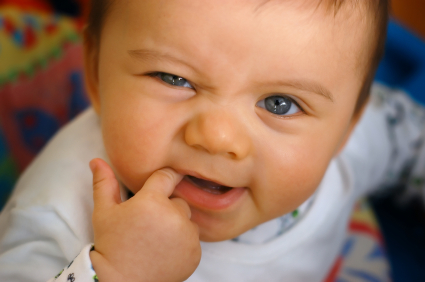
Tonsillitis
What is it? Inflammation of the tonsils, caused by a viral (and occasionally, bacterial) infection.
Symptoms: Sore throat, difficulty swallowing, hoarse or no voice, temperature of 380C or higher, coughing, headache, feeling sick, earache, feeling tired.
Treatments: Paracetamol or ibuprofen. Antibiotics may also be prescribed by a GP.
Advise parents to ensure their child drinks plenty of fluids and rests. Viral tonsillitis spreads easily, so good hygiene should also be adopted.
Recommend a GP if symptoms persist for more than four days or continue to occur.
Pharmacists have a real part to play in helping parents understand that these common illnesses are all part of childhood
